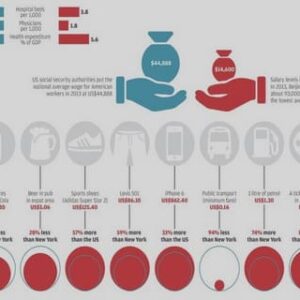(Downloads - 0)
For more info about our services contact : help@bestpfe.com
Table of contents
Chapter 1. Introduction
1.1. General context
1.2. Short range protocols
1.1. Wireless Sensor Networks
1.2. Challenges in WSN
1.2.1. Energy consumption
1.2.2. Channel conditions
1.2.3. Medium access
1.2.4. Mobility
1.3. Contributions and manuscript organization
Chapter 2. IEEE802.15.4/ZigBee overview
2.1. Introduction
2.2. Sensor node architecture
2.2.1. The sensing unit
2.2.2. The processing unit
2.2.3. The transmission unit
2.2.4. The power supply unit
2.3. IEEE 802.15.4 overview
2.3.1. IEEE 802.15.4 versions
2.3.2. IEEE 802.15.4 nodes
2.3.3. IEEE 802.15.4 topology
2.3.4. Physical layer
2.3.5. Mac sublayer
2.3.6. Logic Link Control (LLC) sublayer
2.4. ZigBee protocol [ZigBee]
2.4.1. Topology
2.4.2. Addressing mode
2.4.3. ZigBee routing protocols
2.5. Energy consumption in IEEE 802.15.4 WSNs
2.5.1. PHY Layer
2.5.2. MAC Sublayer
2.6. Summary
Chapter 3. State of the art
3.1. Introduction
3.2. Proposed approaches for reducing energy consumption
3.2.1. PHY Layer
3.2.2. MAC sublayer
3.3. Mobility
3.3.1. Ad hoc networks
3.3.2. Mobility in cellular networks: different solutions
3.3.3. Mobility in IEEE 802.15.4
3.3.4. Mobility models
3.4. Link Quality Estimation
3.4.1. Considered parameters
3.4.2. Overview of link quality estimators
3.5. Rate adaptation in IEEE 802.15.4
3.5.1. Available rates in IEEE 802.15.4
3.5.2. Overview of proposed rate adaptation algorithms for IEEE 802.15.4
3.6. Summary
Chapter 4. An Enhanced Mobility Management Approach for IEEE 802.15.4 protocol
4.1. Introduction
4.2. Proposed network architecture
4.2.1. Network topology
4.2.2. Addressing and routing
4.3. Simulation tools and general simulation setup
4.4. Energy consumption in the standard procedure
4.5. Handover procedure
4.6. Efficiency of using LQI in mobility management
4.6.1. Network architecture and initialization
4.6.2. Selection of the new coordinator
4.6.3. Simulation use cases
4.6.4. Gain in energy and delay for both scenarios
4.7. An LQIthreshold formula for mobility management
4.7.1. LQIthreshold formula
4.7.2. Impact of β parameter
4.8. Same-road speculative algorithm
4.8.1. Simulation setup
4.8.2. Evaluation of the proposed approach
4.9. Probabilistic speculative algorithm
4.9.1. Description of the Probabilistic Algorithm
4.9.2. Gains in energy and delay of the probabilistic algorithm
4.10. Summary
Chapter 5. Rate adaptation algorithm
5.1. Introduction
5.2. A Mobility-aware Rate Adaptation Algorithm
5.2.1. Rate selection algorithm
5.2.2. Evaluation of the Approach
5.3. An adaptive rate adaptation algorithm
5.3.1. Link Quality Estimation Metrics based on chip error rate
5.3.2. Rate Selection Algorithm
5.3.3. Scenario description and simulation setup
5.3.4. PDR evaluation and mobility impact
5.3.5. Energy efficiency
5.4. Summary
Chapter 6. Conclusion




